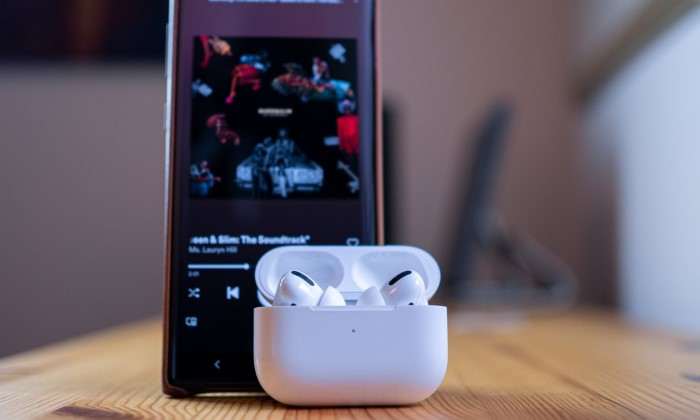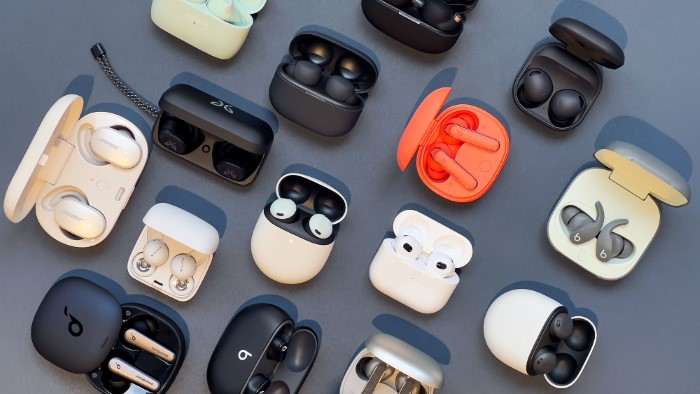Understanding AirPods Compatibility with Android Devices

AirPods are designed primarily for Apple devices, with special features like automatic pairing, Siri integration, and seamless switching between Apple products. But at their core, AirPods are Bluetooth headphones, which means they can connect to any device that supports Bluetooth technology, including Android smartphones and tablets.
While you won’t get all the exclusive Apple features on Android, you can still enjoy a quality wireless audio experience with your AirPods.
How to Connect AirPods to an Android Device
Pairing AirPods with your Android phone or tablet is relatively straightforward. Here’s a step-by-step guide to help you connect them without any hassle:
Enable Bluetooth on Your Android Device
To start, ensure Bluetooth is enabled on your Android device:
- Open the “Settings” app.
- Select “Bluetooth” or “Connections” (this may vary depending on your Android model).
- Toggle the Bluetooth switch to turn it on.
Put Your AirPods in Pairing Mode
Next, you need to put your AirPods in pairing mode:
- Place both AirPods in their charging case.
- Open the lid of the charging case but leave the AirPods inside.
- Press and hold the button on the back of the AirPods case until the LED light starts flashing white. This indicates that the AirPods are in pairing mode.
Pair Your AirPods with Your Android Device
Once your AirPods are in pairing mode:
- Go back to the “Bluetooth” settings on your Android device.
- Look for “AirPods” in the list of available devices.
- Tap on “AirPods” to pair. You’ll hear a chime in your AirPods, indicating that they are connected.
That’s it! Your AirPods are now successfully connected to your Android device.
What Features Do You Lose When Using AirPods with Android?
While AirPods work with Android, certain features that enhance the experience for iPhone users won’t be available. Here’s what you’ll be missing out on when using AirPods with Android:
Siri Integration
AirPods are designed to work seamlessly with Apple’s virtual assistant, Siri. With Android, you won’t be able to use voice commands with Siri, but you can still use Google Assistant or another virtual assistant available on your Android device.
Automatic Ear Detection
On Apple devices, AirPods can detect when they’re in your ears and automatically play or pause audio. Unfortunately, this feature isn’t available on Android, so you’ll need to manually pause or play your audio.
Customizable Tap Controls
Apple users can customize the double-tap gesture on their AirPods to control playback or activate Siri. On Android, the default double-tap feature will either play or pause audio, and there’s no way to change or customize these controls without third-party apps.
Battery Indicator
AirPods on iOS devices display their battery status directly in the phone’s interface. When using AirPods with Android, you won’t see this battery indicator, though there are apps available that can provide this functionality.
Enhancing Your AirPods Experience on Android

Despite missing out on some Apple-exclusive features, there are ways to optimize your AirPods experience on Android. Several third-party apps can enhance the functionality of AirPods when paired with an Android device.
Use AirBattery to Monitor Battery Levels
Since you won’t get a battery indicator on Android, the AirBattery app can fill that gap. This app provides real-time battery status of your AirPods and charging case. With a simple interface, you’ll know how much charge is left in each earbud and the case, just like on an iPhone.
Use AssistantTrigger for Google Assistant Integration
While Siri integration is lost, you can still summon Google Assistant using your AirPods. AssistantTrigger is an app that lets you assign the double-tap gesture to activate Google Assistant. This gives Android users a Siri-like experience on their AirPods.
Customize Your Experience with Podroid
Podroid is another popular app designed to enhance AirPods functionality on Android. It offers features like battery status notifications, customizable controls, and even auto-pause when you remove your AirPods from your ears (although it might not be as seamless as on iOS).
Why You Should Consider Using AirPods with Android
Despite losing a few features, there are still many reasons why using AirPods with an Android device can be a good idea.
High-Quality Sound
AirPods deliver excellent sound quality with balanced bass and crisp highs. Whether you’re listening to music, watching videos, or taking calls, the audio performance remains solid on Android.
Compact and Portable Design
The AirPods are known for their compact, lightweight design. They come with a sleek charging case that fits easily into your pocket, making them incredibly portable. This convenience translates well to Android users, especially those who prioritize portability and ease of use.
Reliable Connectivity
AirPods connect quickly and reliably over Bluetooth. Once paired with your Android device, you can enjoy stable audio without the hassle of tangled wires or disconnections.
Long Battery Life
AirPods offer excellent battery life, with up to five hours of listening time on a single charge. The charging case provides multiple additional charges, extending the listening time to over 24 hours. This feature remains consistent whether you’re using them with iOS or Android devices.
Comparing AirPods to Other Wireless Earbuds for Android

If you’re an Android user wondering whether AirPods are the best choice for you, it’s worth comparing them to other wireless earbuds that are designed specifically for Android devices.
AirPods vs. Samsung Galaxy Buds
Samsung’s Galaxy Buds are often seen as the AirPods equivalent for Android users. Here’s a quick comparison between the two:
- Sound Quality: Both AirPods and Galaxy Buds deliver high-quality audio, though some users prefer the deeper bass of the Galaxy Buds.
- Comfort: AirPods have a universal fit, while the Galaxy Buds offer customizable tips, which may provide a more comfortable fit for some users.
- Features: Galaxy Buds have better integration with Android, offering features like a dedicated app for custom settings, battery monitoring, and touch controls. AirPods, as mentioned earlier, require third-party apps to enable similar features.
- Price: Galaxy Buds tend to be more affordable than AirPods, making them an attractive alternative for Android users.
AirPods vs. Jabra Elite 75t
The Jabra Elite 75t earbuds are another excellent alternative for Android users. Here’s how they stack up against AirPods:
- Sound Quality: The Jabra Elite 75t offers slightly better sound isolation and richer bass than AirPods.
- Durability: Jabra’s earbuds are water-resistant, making them a better option for workouts or outdoor activities compared to AirPods.
- Battery Life: Both earbuds offer similar battery life, though Jabra Elite 75t’s charging case provides a bit more listening time.
- Features: Jabra’s companion app allows for extensive customization, including sound profiles, equalizer settings, and firmware updates.
Should You Choose AirPods for Your Android Device?
AirPods can be a great choice for Android users, especially those who value sound quality, design, and battery life. However, you should be aware of the features you’ll miss out on when compared to iOS users. If you’re willing to use third-party apps like AirBattery or AssistantTrigger, you can still enjoy a seamless experience.
That said, if you prioritize full functionality and deeper integration with Android, it may be worth considering alternatives like the Galaxy Buds or Jabra Elite 75t.
Related Post:
How to Transfer from Android to iPhone: A Complete Guide
Enjoy Gaming: Best Offline Android Games Revealed
How to Rotate Screen on Android: A Complete Guide
AirPods can connect to Android devices and provide excellent sound quality, comfort, and reliable Bluetooth connectivity. Although you’ll miss some Apple-specific features like Siri integration and automatic ear detection, third-party apps can help bridge the gap.
If you already own AirPods and are switching to Android, there’s no need to invest in a new pair of wireless earbuds. However, if you’re an Android user shopping for earbuds, it might be worth exploring alternatives that offer better compatibility and features designed for Android.


